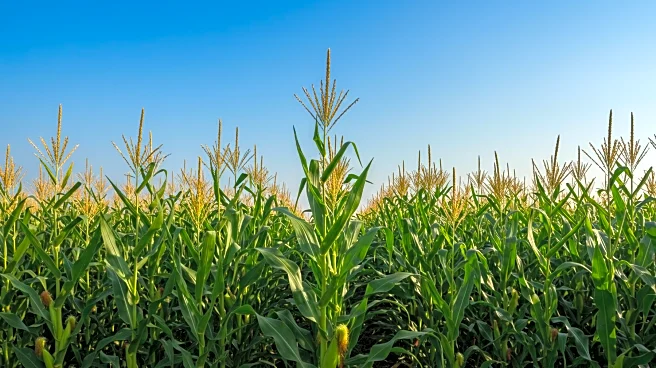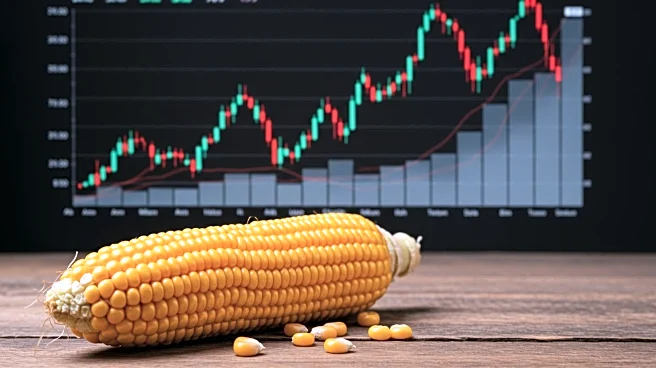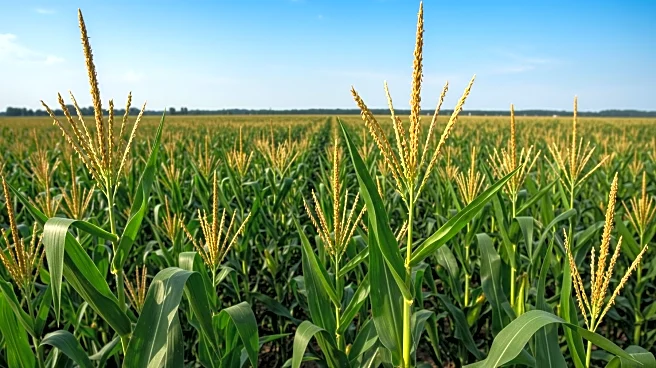What's Happening?
The USDA's World Agricultural Supply and Demand Estimates (WASDE) report, released on August 12, has projected a significant increase in corn acreage and yield. The report indicates that planted acres have risen by 2.1 million to 97.3 million, with yield reaching a record 188.8 bushels per acre. This has resulted in a production increase from 15.705 billion bushels to 16.742 billion. Demand has also improved, with feed usage, ethanol, and exports all seeing increases. Consequently, the projected carryout has risen from 1.66 billion bushels to 2.117 billion. Despite these projections, December corn futures experienced only a minor price change, losing 13¼¢ for the session.
Why It's Important?
The USDA's projections are significant as they suggest a record crop yield, which could influence market dynamics. The lack of strong negative price reactions indicates that the market may not fully believe the high yield projections or that selling interest is diminishing due to already low prices. For corn end users, this suggests that prices may not decrease significantly despite the increased supply. Farmers might not need to rush to sell, as the market may stabilize. This situation could impact decisions related to inventory management and pricing strategies for both producers and buyers.
What's Next?
Producers are advised to anticipate a record crop and limited price rallies, setting reasonable price targets for selling bushels that cannot be stored. Options such as deferred futures contracts and cash contracts may be considered to manage price risks. Buyers might secure inventory through cash contracts or call options to establish price ceilings. The market's response to these projections will be closely monitored, and strategies will be adjusted accordingly.
Beyond the Headlines
The report's implications extend beyond immediate market reactions, potentially affecting long-term agricultural strategies and economic planning. The record yield projections could influence future agricultural policies and investment decisions, as stakeholders assess the reliability of such forecasts and their impact on supply chain dynamics.











